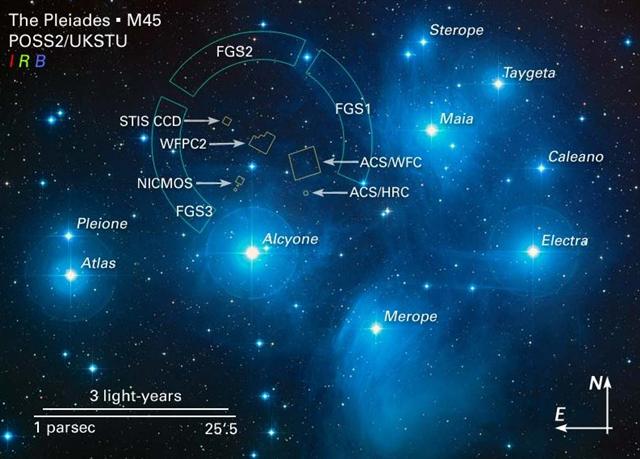GLYPHS
Aa6-66-2
Thus the Moon was created before
the Sun and this cosmic order of things ought to explain why the
Old Moon Goddess was presented at the Flood before God L - given
that he was an expression of (personification of) the Sun:

In the cycle of the year the Sun
did not return until spring equinox:

Page number 74 in the Dresden Codex
might therefore have referred to the place 6 days before MARCH
21 (80) - cfr at Ca9-12:
|
SEPT 16 |
17 (324 -
64) |
(261
→
9 * 29) |
19 |
20 |
(→
364 -
100) |
|
'Oct 23 |
24 (324 -
27) |
25 (298) |
26 |
27 (365 +
300) |
28 (666) |
 |
 |
 |
 |
 |
 |
|
Ca9-15 |
Ca9-16 (244) |
Ca9-17
(*245) |
Ca9-18 |
Ca9-19 |
Ca9-20 |
| i
te mauga pu hia |
E
rima ki te henua |
koia ku honui |
erua maitaki |
ko
koe ra |
|
Nov 19 |
20 (324) |
21 |
22 |
23 (327) |
24 (145 +
183) |
|
16h (*243.5)
ACRAB, Jabhat al Akrab (*243.3), θ Lupi,
Rutilicus (*243.5), Marfik (*243.7), φ Herculis (*243.8)
|
ψ Scorpii (*244.6),
Lesath (*244.8) |
χ Scorpii (*245.1),
Yed Prior, δ Tr. Austr. (*245.5) |
Yed Posterior,
Rukbalgethi Shemali (*246.6). δ Apodis (*246.7), ο
Scorpii (*246.8) |
Heart-5 (Fox)
σ SCORPII
(*247.0),
Hejian (*247.2), ψ Ophiuchi (*247.7) |
ρ Ophiuchi (*248.1),
Kajam (*248.3), χ Ophiuchi (*248.5), She Low, ι Tr.
Austr. (*248.7), ζ Tr. Austr. (*248.8) |

... Proclus informs us that the fox
star nibbles continuously at the thong of the yoke which
holds together heaven and earth; German folklore adds
that when the fox succeeds,
the world will come to its end. This fox star is no
other than Alcor, the small star g near zeta
Ursae Majoris (in India Arundati, the common wife
of the Seven Rishis, alpha-eta Ursae ... |
|
Nakshatra
Full Moon: |
|
4h (*60.9)
JĪSHUĬ =
λ Persei
(*60.7)
COR CAROLI |
υ Persei
(*61.2) |
BEID = ο¹
Eridani
(*62.2), μ Persei (*62.8)
VINDEMIATRIX |
Al Dabarān-2 (Follower)
HYADUM I
= γ Tauri
(*63.4)
*63.4 -
*41.4 = *22.0 |
HYADUM II =
δ¹ Tauri (*64.2) |
Net-19 (Crow)
AIN (Eye)
= ε Tauri, θ¹ Tauri, θ² Tauri
(*65.7) |
|
May 20 (140) |
21 (324 -
183) |
22 |
23 |
24 |
25 (145) |
|
"April 9 |
10 (100) |
11 |
12 (80 + 22) |
13 |
14 (104) |
|
MARCH
17 |
18 |
(142 - 64 =
78) |
20 |
21 (144 -
64) |
MARCH 22 (*1) |
|
... There was no water in the
village. The lakes and rivers were dry. Raven and Crow,
two young girls who were having their first menstrual
courses, were told to go and draw water from the ocean.
Finding the journey too long, Raven decided just to
urinate into her basket-bucket. She decieved no one and
was severly scolded. Crow
returned much later but with drinking water. As a
punishment, Raven was condemned never to find water in
the summer; only in winter would she find something to
drink. For that reason the Raven never drinks during the
hot months; she speaks with a raucous voice because of
her dry throat ... |
Which place (74) then ought to correspond to November 17 (*241) where the Breast of Cassiopeia
(Schedir)
ideally should arrive at the Full Moon in the following day:
|
SEPT 10 |
11
(254, *174) |
12 |
13 |
14 (*177) |
SEPT 15 |
|
'Oct 17 |
18 |
19 |
20 |
21 (660) |
'Oct 22 (295) |
 |
 |
 |
 |
 |
 |
|
Ca9-9 |
Ca9-10 |
Ca9-11 |
Ca9-12 (240) |
Ca9-13 |
Ca9-14 (242) |
| kotia |
kua rere |
ki te marama |
e moa |
haati kava |
e moa |
|
Nov 13 |
14 (254 + 64) |
15 |
16 (320) |
17 |
Nov 18 |
|
κ Librae (*237.2),
ι
Serpentis (*237.4), ψ² Lupi, ρ Oct. (*237.5), γ Cor. Borealis, η
Librae (*237.7), COR
SERPENTIS = α Serpentis (*237.9)
*237.4 -
*41.4 = *196.0 |
π Cor. Borealis, UNUK ELHAIA = λ
Serpentis
(*238.1), CHOW = β
Serpentis (*238.6) |
κ Serpentis (*239.3), δ
Cor. Borealis, Tiānrǔ (*239.5), χ Lupi, (*239.6), ω Serpentis (*239.7),
BA =
ε Serpentis, χ Herculis (*239.8). κ Cor. Borealis, ρ Serpentis (*239.9) |
λ Librae (*240.0), β Tr.
Austr. (*240.3), κ Tr. Austr. (*240.4), ρ Scorpii (*240.8)
*240.4 -
*41.4 = *199.0 |
Iklīl al Jabhah-15 (Crown of the
Forehead) /
Anuradha-17 (Following
Rādhā) /
Room-4 (Hare)
ξ Lupi, λ Cor.
Bor. (*241.1), ZHENG = γ Serpentis,
θ Librae (*241.2),
VRISCHIKA = π Scorpii
(*241.3), ε Cor. Borealis (*241.5), DSCHUBBA
= δ Scorpii
(*241.7), η Lupi (*241.9) |
υ Herculis (*242.3),
ρ
Cor. Borealis (*242.4), ι Cor. Borealis (*242.5), θ Draconis (*242.6),
ξ Scorpii (*242.7)
*242.4 -
*41.4 = *201.0
SCHEDIR
|
|
... In other words, the ancient Druidic religion
based on the oak-cult will be swept away by
Christianity and the door - the god Llyr - will
languish forgotten in the
Castle of Arianrhod,
the Corona Borealis. This helps us to
understand the relationship at Rome of Janus and
the White Goddess Cardea who is ... the Goddess
of Hinges who came to Rome from Alba Longa. She
was the hinge on which the year swung - the
ancient Latin, not the Etruscan year - and her
importance as such is recorded in the Latin
adjective cardinalis - as we say in
English 'of cardinal importance - which was also
applied to the four main winds; for winds were
considered as under the sole direction of the
Great Goddess until Classical times ... |
|
Nakshatra
Full Moon: |
|
δ Persei (*54.7) |
Al Thurayya-27 (Many
Little
Ones) /
Krittikā-3 (the nurses
of Kārttikeya) /
Hairy Head-18 (Cockerel) |
MENKHIB = ζ Persei
(*57.6)
PORRIMA
|
ε Persei (*58.5), ξ Persei (*58.8), ZAURAK = γ
Eridani (*58.9) |
λ Tauri (*59.3), ν Tauri (*59.9) |
|
TAU-ONO
(6 Stones) |
Temennu-3 (Foundation Stone) |
|
ATIKS = ο Persei, RANA =
δ Eridani (*55.1),
CELAENO (16 Tauri),
ELECTRA (17), TAYGETA (19),
ν
Persei (*55.3),
MAIA (20), ASTEROPE (21), MEROPE (23)
(*55.6) |
ALCYONE
(*56.1),
PLEIONE
(28 Tauri), ATLAS
(27) (*56.3) |
|
May 14 |
15 (365 + 135) |
16 (136) |
(320 - 183) |
18 |
May 19 |
|
MARCH 11 |
12 (436, 71) |
13 (136 - 64) |
3-14 (73) |
15 (74) |
MARCH 16 |
|
... The Mahabharata insists on six as the number
of the Pleiades as well as of the mothers of Skanda
and gives a very broad and wild description of the birth and the
installation of Kartikeya 'by the assembled gods ... as
their generalissimo', which is shattering, somehow, driving home
how little one understands as yet. The least which can be said,
assuredly: Mars was 'installed' during a more or less close
conjunction of all planets; in Mbh. 9.45 (p. 133) it is stressed
that the powerful gods assembled 'all poured water upon
Skanda, even as the gods had poured water on the head of
Varuna, the lord of waters, for investing him with
dominion'. And this 'investiture' took place at the beginning of
the Krita Yuga, the Golden Age
... |
... The correspondence between the winter
solstice and the kali'i rite of the Makahiki is
arrived at as follows: ideally, the second ceremony of 'breaking
the coconut', when the priests assemble at the temple to spot
the rising of the Pleiades, coincides with the full moon (Hua
tapu) of the twelfth lunar month (Welehu). In the
latter eighteenth century, the Pleiades appear at sunset on
18 November. Ten days later (28
November), the Lono effigy sets off on its circuit, which
lasts twenty-three days, thus bringing the god back for the
climactic battle with the king on 21 December, the solstice (=
Hawaiian 16 Makali'i). The correspondence is 'ideal' and
only rarely achieved, since it depends on the coincidence of the
full moon and the crepuscular rising of the Pleiades
...

|







